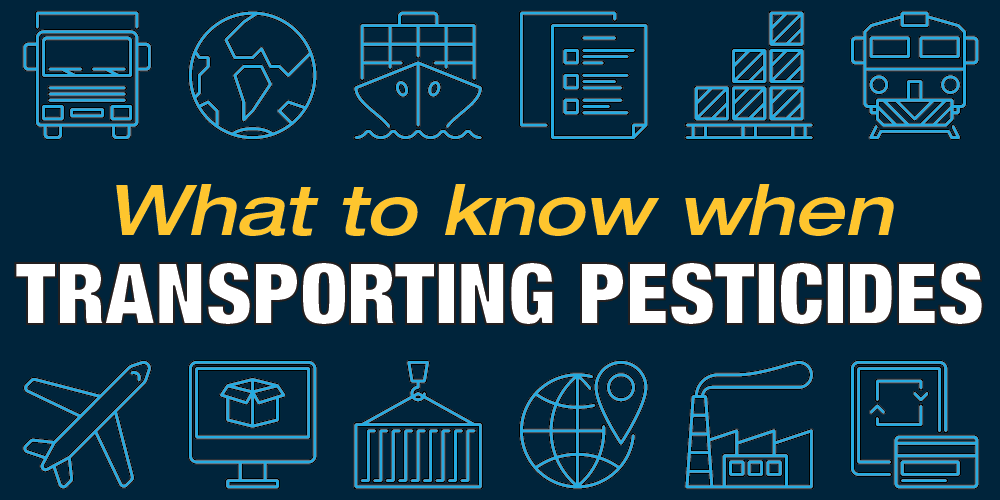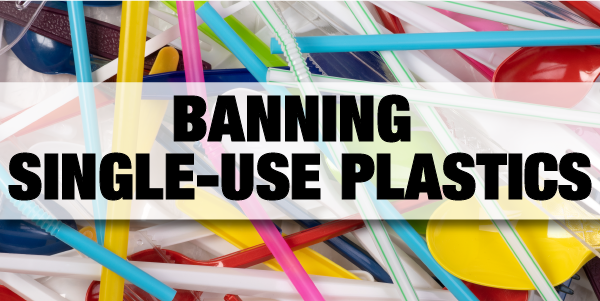
In-transit, manufactured for export, and editorial/transportation changes
IN-TRANSIT OR “FOR EXPORT” PMRA-UNREGISTERED PESTICIDES & WHMIS-STYLE HAZARD COMMUNICATION
Those involved in manufacture, import, storage or transportation of pesticides, which are not registered for use in Canada may soon see reference to GHS-style documentation accompanying foreign products while they are in Canada. This amendment is partly as a result of a relaxation of the “in-transit” prohibition on pesticides (“pest control products” or PCP) that are not registered for use in Canada (required as a result of the government’s support of the 2017 World Trade Organization’s ratification of the 2014 Trade Facilitation Agreement – TFA).
Until recently, there was a general prohibition in the Canadian PCP legislation that, in general, prohibited the: manufacture, possession, handling, storage, transportation, import, distribution, or use of unregistered pest control products. An amendment to the PCPR adopted in Canada Gazette II (CG II) on December 26, 2018 includes authorization of import/export for “Products not Intended for the Canadian Market”.
WHMIS 2015, as specified in the Hazardous Products Act (HPA) s. 12/Schedule 1, excludes “pest control products”, as defined in the PCP Act (PCPA), from the WHMIS regulations. This wasn’t perceived to be a safety issue since, up until the recognition of the TFA only registered PCP were authorized for general manufacture, possession, handling, storage, transportation, import, distribution, or use. There are limited exceptions, but only under specified circumstances, usually with restrictions.
Registration of pesticides requires submission of label text with hazard communication criteria, to Health Canada’s Pest Management Regulatory Agency (PMRA). PMRA must approve the label, and the registrant cannot subsequently make changes without re-approval from PMRA.
Presumably because importation of non-registered PCP was generally prohibited under the PCP Act, it was not considered necessary to specify exemption only for “registered” PCP in the HPA.
GHS OPTION ENTERS THE PICTURE
PCP in-transit – i.e., PCP that are not intended for use in Canada, but will move through Canada en route to their destination, would not be subject to the registration process, nor will they be required to comply with WHMIS under the HPA exemption. Thus, there has been an amendment to the PCP Regulation (PCPR) for alternate hazard communication documents to accompany “in-transit” shipments.
Subsection 3.2(1) prescribes 5 characteristics of the availability of the documentation.
Subsection 3.2(3) (hazard identification) elements may be based on either the appropriate current PCP precautionary symbols/signal words for registered PCP; or the applicable GHS precautionary symbols, signal words, and hazard statements.
In addition to the hazard identification section, six other categories of information are prescribed in the new subsections 3.2(2)-(8):
3.2(2) Product/Importer identification (5 elements)
3.2(3) Hazard identification (nature and degree)
3.2(4) Active ingredient (chemical name and concentration)
3.2(5) First aid measures (including reference instructing to take accompanying information when seeking medical attention)
3.2(6) Firefighting, handling, transportation, and storage
3.2(7) Accidental release, decontamination, and safe disposal including packages)
3.2(8) Toxicological, and ecological risk reduction
MINISTER MAY “REQUEST” INFORMATION
A subsection to PCPR requires that documentation containing specified identification and safety information accompany the shipment while it is in Canada. In addition, the “importer, exporter or owner” must provide the Minister, on request, with any or all of the information 30 days in advance of import. The Minister also may request details of the handling of the shipment within Canada, and when it will be exported.
EXPORTING MANUFACTURERS ALSO IMPLICATED
There is currently a provision for manufacturers to make non-registered PCP for export only. However, the exemption only applies if the active ingredient is itself registered with PMRA. If the PCP formulation itself is not registered, then the documentation requirements for imported “in-transit” shipments will apply to the manufacturer of the unregistered PCP for export.
DISTRIBUTION CHAIN RESPONSIBILITIES
Those involved with the handling/forwarding, transportation, or storage of in-transit/export PCP will be expected to have the identification/safety documentation available.
EXEMPTION- TDG REGULATED
An imported, unregistered PCP that is subject to the Transportation of Dangerous Goods (TDG) Act is exempt from the identification/safety information documentation in the PCP Regulation s. 3.2. Presumably the shipping documents and safety marks, etc., that are required by the TDG Act are considered adequate alternatives.
OTHER AMENDMENTS – TRANSPORT SEGREGATION, PACKAGE INTEGRITY
In addition to editorial changes (e.g., adding plural for formulations with more than one active ingredient; making the references to “graphic” label elements more inclusive), both related and unrelated directly to the TFA issues, the amended PCPR add segregation of poisonous/toxic hazard PCP from human food/animal feed during transportation (previous references referred to “storage and display”).
Any PCP, registered containing PCPR signal word “POISON” with the danger precautionary symbol; or unregistered with the GHS signal word “DANGER” with “Fatal…” or “Toxic…” hazard statements; is subject to transportation in a separate compartment from food/feed.
In-transit PCP are also expected to be packaged to safely contain the product under normal conditions of storage and transportation.
IMPLEMENTATION
The changes directly related to the TFA process become effective in July 2019, as indicated in the CG II SOR/2018-284 amendment. Details of required documentation (in English or French) are in the notice. The other changes, editorial, and inclusion of transportation segregation are effective as of the December 26, 2018 publication date. Background on the TFA leading to this amendment is also contained in the impact statement of the CG II notice: http://www.gazette.gc.ca/rp-pr/p2/2018/2018-12-26/html/sor-dors284-eng.html
The in-force date for the “in-transit”/export provisions are tied to the adoption of the TFA, which is also contained in the Dec. 26, 2018 edition of CG II (SI/2018-113): http://www.gazette.gc.ca/rp-pr/p2/2018/2018-12-26/html/si-tr113-eng.html.






 ICC USA
ICC USA ICC Canada
ICC Canada